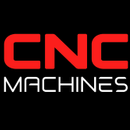Hydraulic Manifolds in Aircraft: Types, Applications, and CNC Manufacturing

Hydraulic Manifolds in Aircraft: Types, Applications, and CNC Manufacturing
Understanding Hydraulic Manifolds in Aviation
Modern aircraft rely heavily on hydraulic power for tasks that require substantial force, including extending and retracting landing gear, operating flaps, and moving other control surfaces. A hydraulic manifold brings these functions together by combining multiple valves, regulators, filters, and pressure sensors into a single, centralized unit. By doing so, the manifold streamlines fluid distribution, supports maintenance needs, and helps ensure safety by minimizing the chance of leaks or faulty connections in complex piping systems.
Types of Hydraulic Manifolds
1. Integrated Hydraulic Manifolds
Integrated manifolds consolidate most valves and control elements into a monolithic block or plate, reducing the number of hoses and fittings. Commonly found in larger commercial and military aircraft, these manifolds enhance reliability by minimizing potential leak paths.
- Multi-Valve Blocks: Several directional or pressure-control valves share a single metal block, with internal passages directing hydraulic fluid to the correct outputs.
- Solenoid-Operated Sections: Electric solenoids can be built into specific sections of the manifold, offering precise, computer-controlled operation.
2. Modular Hydraulic Manifolds
Modular manifolds consist of several smaller, interchangeable sections, each containing a particular function—e.g., flow control, pressure relief, or check valves. This approach suits aircraft that require flexibility for mission-specific add-ons (like refueling probes or weapon systems in certain military platforms).
- Stacking Elements: Modules may stack or bolt together, forming a customized hydraulic circuit tailored to the aircraft’s needs.
- Ease of Maintenance: Faulty modules can be swapped out independently, reducing downtime during repairs.
3. Manifold Plates
In smaller aircraft or limited-space environments, thinner manifold plates may be used. These plates feature internal milled channels and external ports, saving space and weight compared to bulky, traditional blocks.
- Lightweight Design: Ideal for drones, rotorcraft, and compact fixed-wing aircraft where mass must be minimized.
- High Customizability: Channels and valves can be laid out to accommodate unique fuselage shapes or routing constraints.
How Hydraulic Manifolds Are Used
Whether modular, integrated, or plate-based, a hydraulic manifold’s core purpose is to control and direct fluid flow. In an aircraft, these manifolds typically perform:
- Distribution of Pressurized Fluid The manifold receives fluid from one or more hydraulic pumps, then channels it to actuators responsible for moving control surfaces or powering landing gear.
- Regulation of Pressure and Flow Pressure-relief valves within the manifold prevent dangerous over-pressurization, while flow-control valves manage the speed and smoothness of actuator movement.
- Shut-Off or Isolation Some manifolds incorporate shut-off valves allowing certain circuits to be isolated—crucial for managing leaks or prioritizing essential flight controls during an emergency.
Manufacturing Hydraulic Manifolds
Material Selection
Aircraft hydraulic manifolds must endure high pressures (often several thousand psi) and harsh environmental conditions. Aluminum alloys (e.g., 6061, 7075) dominate for their strength-to-weight ratio and corrosion resistance. In heavier-duty or high-temperature scenarios, stainless steel or titanium may be used, though these materials increase cost and machining difficulty.
Forming and Machining
- Forging or Extrusion Metal billets can be forged or extruded into near-net shapes, reducing waste and improving mechanical properties.
- Precision Milling and Drilling Internal fluid passages, valve cavities, and threaded ports require exacting tolerances. Multi-axis milling machines create complex channels, while drilling operations form precise inlets and outlets.
- Surface Treatments After machining, manifolds often undergo treatments such as anodizing (in the case of aluminum) or passivation (for stainless steel). These processes enhance corrosion resistance and overall longevity.
- Assembly and Inspection If valves, filters, and sensors are integrated into a manifold block, they’re installed and torque-checked according to aerospace standards. Non-destructive testing (NDT), such as dye penetrant or ultrasonic inspection, confirms structural integrity, and hydrostatic checks verify fluid-tight seals.
The Role of CNC Technology
Achieving Tight Tolerances
CNC (Computer Numerical Control) machinery is indispensable for manufacturing modern aircraft hydraulic manifolds. These machines operate with micrometer-level precision, ensuring each channel, port, and mounting hole meets strict engineering specifications. Tolerances are often crucial for preventing leaks, achieving consistent fluid flow, and ensuring secure fastening of valves and fittings.
Complex Internal Passages
Manifolds may require intricate internal paths or branching conduits to route fluid to multiple circuits within a single block. Multi-axis CNC machines can carve these shapes accurately, minimizing transitions that could create turbulence or pressure drops.
Reduced Lead Times and Costs
Programmable CNC operations allow for faster design iterations and repeatable outcomes. Once a toolpath is created, multiple manifold blocks can be machined in succession, reducing overall lead times and production costs. Moreover, integrated inspection tools can detect deviations early, lowering scrap rates.
Conclusion
Hydraulic manifolds are central to managing an aircraft’s hydraulic systems, whether in commercial airliners, military jets, or light aircraft. They simplify fluid routing by consolidating valves, sensors, and connecting channels into a single, robust assembly, enhancing reliability and reducing maintenance. Manufactured from high-strength metals like aluminum, titanium, or steel, these components rely heavily on CNC machining to achieve tight tolerances and precise internal geometries. As aerospace technology continues to evolve and prioritize efficiency, hydraulic manifold designs will likely become even more integrated, lightweight, and modular—further optimizing aircraft performance and safety.


